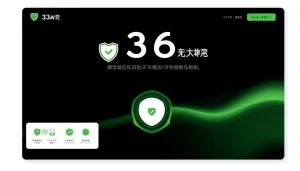Enhancing Communication in Relationships: Effective Strategies for Deeper Connections
Understanding Communication in Relationships
Effective communication is a cornerstone of any healthy relationship. It not only enables partners to express their thoughts and feelings but also fosters a deeper connection between them. When we talk about communication in relationships, we are addressing a vital aspect that can either strengthen or weaken the bond between individuals. In this article, we will explore the various facets of communication in relationships, analyzing its importance, identifying barriers, and discussing various techniques to enhance dialogue.
The Importance of Effective Communication
Effective communication serves several crucial functions in a relationship. It facilitates clarity, promotes understanding, nurtures intimacy, and fosters mutual respect. Here are several reasons why communication holds such importance:
- Fosters Trust: Open and honest communication builds trust, allowing partners to feel safe sharing their innermost thoughts and feelings without fear of judgment.
- Enhances Emotional Connection: Frequent and engaged conversations create emotional closeness, enabling partners to better comprehend each other’s needs and feelings.
- Conflict Resolution: Good communication also involves addressing conflicts or misunderstandings as they arise, preventing issues from snowballing into larger problems.
- Facilitates Growth: As individuals grow and evolve, ongoing communication ensures that partners can adapt together and maintain balance in their relationship.
Common Barriers to Healthy Communication
Despite its importance, various barriers can hinder effective communication in relationships. Recognizing these obstacles is the first step toward overcoming them:
- Assumptions: One common barrier is making assumptions about what a partner thinks or feels. This can lead to miscommunication and resentment.
- Defensiveness: When one partner becomes defensive, it can shut down conversation. This often stems from feeling attacked or misunderstood.
- Distractions: In our increasingly busy lives, distractions from phones, TV, or work can disrupt meaningful conversations.
- Fear of Vulnerability: Sharing one’s emotions can be daunting; fear of being judged or not understood can inhibit open communication.
Types of Communication Styles
Different people communicate in different ways. Recognizing your style, as well as your partner’s, can improve understanding and interaction:
- Passive Communication: Individuals who adopt a passive communication style often prioritize others’ needs above their own, which can lead to feelings of neglect or resentment.
- Aggressive Communication: This style is characterized by yelling, insults, or demeaning comments. It can be destructive and often leads to arguments rather than solutions.
- Passive-Aggressive Communication: This is indirect communication where the person may express anger or frustration through sarcasm or withdrawal instead of confrontation.
- Assertive Communication: This is the healthiest style, characterized by clear and respectful expression of thoughts and feelings while considering the needs of others.
Key Techniques for Open Dialogue
Open dialogue is essential for effective communication. Below are some techniques to facilitate better communication between partners:
Active Listening Practices
Active listening is a powerful technique where the listener fully engages with the speaker. This practice demonstrates respect and encourages the speaker to share more:
- Maintain Eye Contact: This shows attentiveness and encourages trust.
- Reflect and Clarify: Paraphrase what your partner has said to confirm understanding, rephrasing their message for clarity.
- Avoid Interrupting: Let your partner finish their thoughts before responding to show that their perspective is valued.
Using “I” Statements for Clarity
Using “I” statements instead of “you” statements can significantly de-escalate conflict. For example, instead of saying “You never listen to me,” one could say “I feel unheard when I am interrupted.” This method focuses on the speaker’s feelings rather than blaming or attacking the other person.
Encouraging Constructive Conversations
Encouraging constructive conversations involves setting a positive atmosphere where both partners feel comfortable expressing their thoughts. Here are some strategies:
- Choose the Right Time: Timing can influence how a conversation unfolds; choose moments when both partners are relaxed and not preoccupied.
- Stay Calm: Maintain a calm tone and body language even when discussing challenging subjects. This helps to keep the conversation productive.
- Stay Solution-Focused: Instead of dwelling on problems, direct conversations toward finding solutions that work for both partners.
Conflict Resolution Through Communication
Conflict is a natural part of any relationship, but it can be managed through effective communication. Addressing conflicts constructively can lead to stronger partnerships:
Identifying Triggers and Emotional Responses
Understanding what triggers emotional responses can help partners navigate conflicts more effectively. Identifying these triggers requires self-awareness and honesty:
- Reflect on Past Conflicts: Analyze previous disagreements to identify patterns in behavior and emotional responses.
- Discuss Triggers with Your Partner: Sharing personal triggers can promote empathy and understanding.
Strategies for De-escalating Tension
When conflicts arise, having strategies to de-escalate tension is crucial:
- Time-Outs: Taking a break from a heated discussion can allow both partners to cool down.
- Reassuring Touch: Physical touch, like holding hands or a hug, can help diffuse anger and promote connection.
- Change of Environment: Sometimes, changing the discussion environment can provide a fresh perspective and calm tension.
Turning Conflicts Into Opportunities
View conflicts as opportunities for growth rather than crises. Resolving disagreements can enhance understanding and intimacy:
- Learn About Each Other: Use conflicts as a way to learn more about each other’s perspectives, needs, and values.
- Strengthen Problem-Solving Skills: Collaborating to solve conflicts strengthens teamwork and mutual support in the relationship.
Improving Nonverbal Communication Skills
Nonverbal communication plays an equally critical role in interactions. Being aware of body language, facial expressions, and tone can enhance understanding:
The Role of Body Language in Relationships
Body language conveys messages beyond words. Understanding its importance can significantly improve communication:
- Posture: Open body language, such as uncrossed arms, indicates receptiveness, while closed-off body language may signal defensiveness.
- Facial Expressions: Shared emotions can be conveyed through expressions, further emphasizing spoken words.
Reading Nonverbal Cues Effectively
Understanding one’s partner’s nonverbal cues can be essential in communication. It can help identify their feelings even before they speak:
- Observe Reactions: Pay attention to changes in body language, such as leaning away during uncomfortable topics.
- Harmonize Verbal and Nonverbal Communication: Ensure that your body language aligns with your verbal messages to avoid confusion.
Enhancing Understanding Through Eye Contact
Eye contact is a powerful nonverbal cue. It signifies engagement, interest, and respect:
- Practice Balanced Eye Contact: Too much eye contact can feel intimidating, while too little may seem disengaged.
- Use Eye Contact to Reinforce Connection: Maintain eye contact during key statements to reaffirm connection and understanding.
Fostering Healthy Communication Habits
Like any skill, effective communication requires ongoing practice and dedication. Consider the following habits for nurturing communication:
Setting Aside Quality Time for Conversations
In the hustle of daily life, it’s essential to dedicate quality time for conversation:
- Schedule Regular Check-Ins: Make it a habit to set aside time to discuss feelings, goals, or daily events.
- Limit Distractions: Find a quiet space where both partners can focus on one another without interruptions.
The Impact of Digital Communication
In an increasingly digital world, communication has taken on new forms. It’s important to navigate these changes wisely:
- Be Mindful of Tone: Written communication can easily be misinterpreted. Always consider how your words might be perceived.
- Practice Clean Communication: Avoid texting when emotions are high; engage in face-to-face conversations for more meaningful exchanges.
Continuous Practice and Feedback Loops
Continuous improvement in communication can be achieved through regular practice:
- Solicit Feedback: Ask your partner for feedback on your communication style, and be open to constructive criticism.
- Implement Changes: Based on feedback, adapt and refine your communication techniques to ensure both partners’ needs are met.
In conclusion, mastering communication in relationships is crucial for achieving a healthy and thriving partnership. By understanding its importance, overcoming common barriers, and implementing effective techniques, individuals can create a strong foundation for their relationships that fosters love, trust, and understanding. Remember, good communication is an ongoing journey that requires effort, patience, and practice. With commitment and the right skills, couples can enhance their connection and deepen their bond, leading to a fulfilling and enduring relationship.














Post Comment